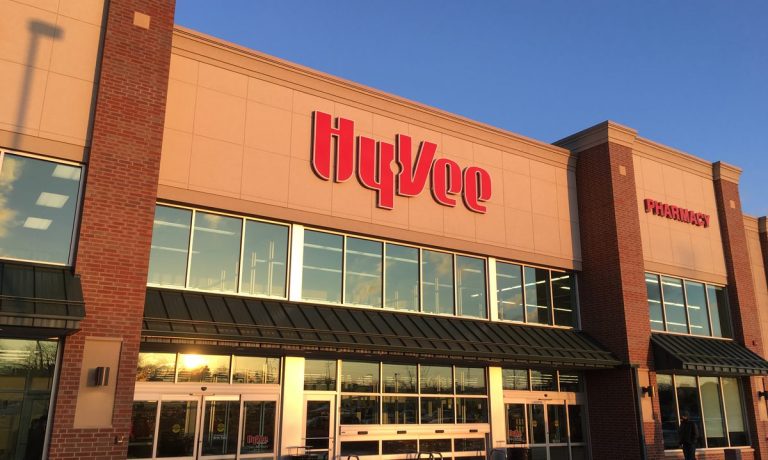Shoppers at Hy-Vee will have to get used to sharing the aisle with robots. The Iowa-based supermarket chain, which operates over 240 stores throughout the Midwest, announced Thursday (Sept. 23) that it is deploying Simbe Robotics’ Tally inventory management robots at locations in Iowa, Nebraska and Missouri.
Tally uses computer vision and radio-frequency identification (RFID) to scan shelves, checking stock levels and shelf placement for quicker insights. It also makes data-informed inventory recommendations.
“Hy-Vee has a strong reputation for excellent customer service and an employee-first culture,” Luke Tingley, senior vice president and chief information officer at Hy-Vee, said in a statement. “By employing Tally, we can continue providing that excellent service by reducing out of stocks and empowering our store teams with real-time insights to ensure the best customer experience across the board.”
The Context
The automation of labor-intensive tasks comes as grocers have been struggling to fill vacancies. By deploying robots to the time-intensive task of inventory management, grocers can free up their workforce for the myriad other jobs that need doing.
While these conditions are challenging for grocers, they have been great for Tally. Last month, St. Louis-based grocery chain Schnuck Markets announced that it was rolling out the shelf-scanning robot at all 111 of its stores. Back in 2020, retail giant Target began its own test of Tally at a location in San Francisco.
Advertisement: Scroll to Continue
See also: Grocery Roundup: Schnuck Markets To Roll Out Robots Chainwide
Robots Take Center Stage In COVID-19 Crisis
These labor issues are even more pronounced in the United Kingdom, where Brexit red tape further limits the employee pool. This week alone, multiple grocers have announced major moves toward automation. Germany-based discount grocery giant Aldi is trying out its first checkout-less supermarket in London, and Asda, a United Kingdom grocery chain with 645 locations, announced that it will begin testing out autonomous delivery with self-driving vans next year.
Read more: UK Supermarkets Adopt Automated Solutions to Combat Labor Shortage
By the Numbers
Artificial intelligence (AI) inventory solutions such as Simbe’s can be key to meeting consumer demand. Between May 2020 and February 2021, out of stocks lost United States supermarkets billions of dollars in missed sales opportunities, per NielsenIQ data. Nationwide, supermarkets missed over $800 million in toilet paper sales, over $600 million in paper towel, almost $500 million in pet food, and over $100 million in cold cereal.
What Experts are Saying
This labor shortage can be in part attributed to skepticism from would-be employees.
“COVID has given [people] the opportunity to reflect on what they really want out of their work experience,” IGA President and CEO John Ross told PYMNTS in an interview. “They want to work for a company that’s making a difference in their community, someone that’s giving back and takes on issues like food waste and reducing plastic. Ironically most grocers do this, but we just aren’t really doing a very great job telling people about it.”
Still, shelf-roaming robots have the disadvantage of being very visible to consumers, commanding their attention, when grocers are best off drawing consumers’ focus to the omnichannel brand experience.
“Digital customers don’t think of channels or devices or stores, for that matter. They think of brands,” Bobby Koscheski, head of omnichannel solutions, grocery and general retail at digital payments software company ACI Worldwide, told PYMNTS. “The technology or the physical part of this shouldn’t be the focus of the journey – it’s really the experience.”
You may also like: From COVID to Product Shortages to Labor Supply, Grocery Stores Adapt To String of Challenges
ACI: Today’s Consumers Expect Grocers To Bring The Brand To Them




